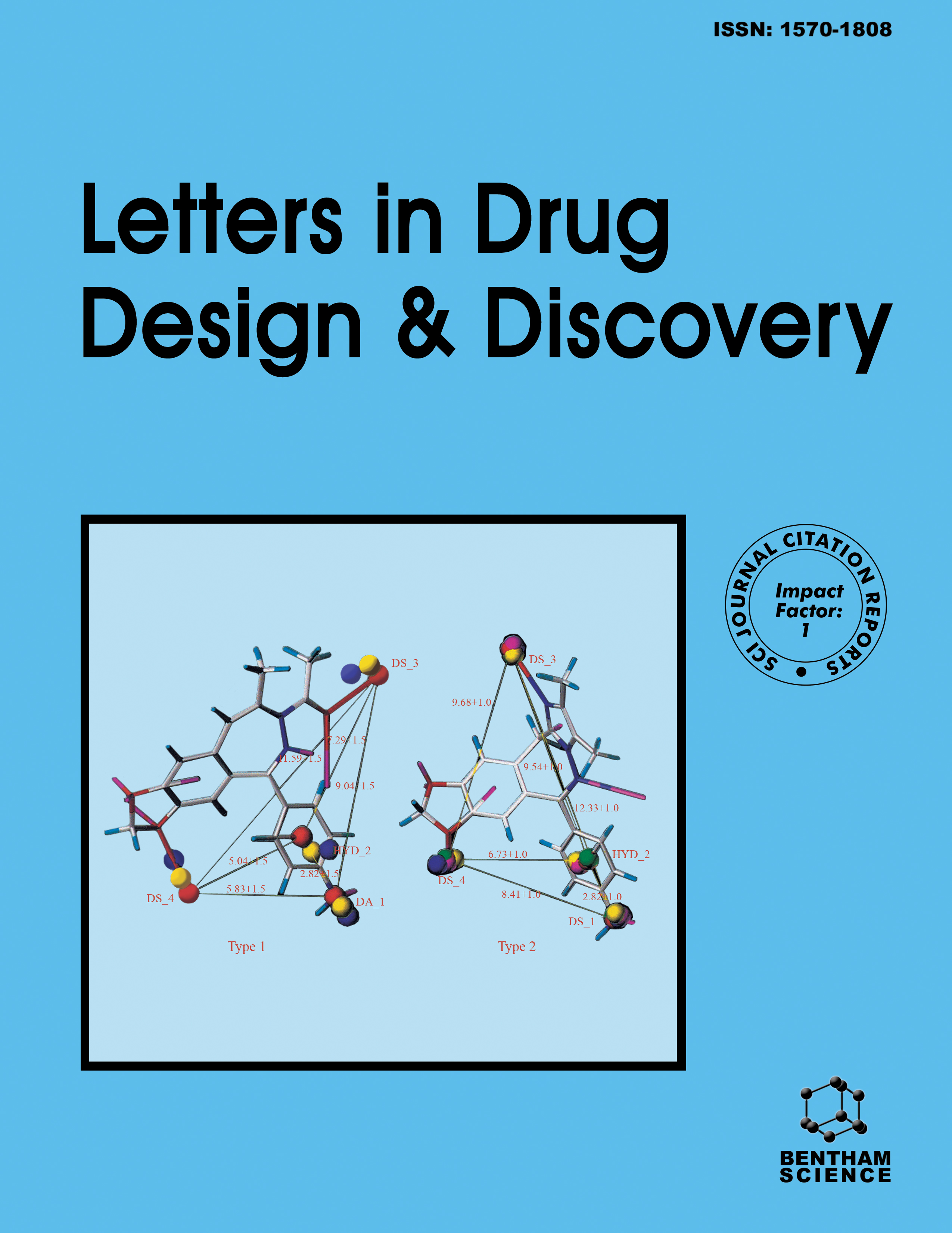- Home
- A-Z Publications
- Letters in Drug Design & Discovery
- Previous Issues
- Volume 21, Issue 10, 2024
Letters in Drug Design & Discovery - Volume 21, Issue 10, 2024
Volume 21, Issue 10, 2024
-
-
Oxidative Biotransformation of Organophosphotioate Pesticides and Acetylcholinesterase Enzymatic Inhibition
More LessIntroduction: Pesticides have lethal properties, capable of controlling or eliminating a living organism; they block the organisms' vital metabolic processes. They cause serious problems for human health, as they are highly toxic. The most used pesticides that are considered toxic are known as organophosphothioates (OP/P=S) in their commercialized form and organophosphates (OP/P=O) in their active form. These compoun Read More
-
-
-
Molecular Docking, Acute Toxicity and Antibacterial Study of Debilon and Phorbasterone-B Extracted from Rhodophyta
More LessAuthors: Saad Salman, Fahad H. Shah, Mehwish Shah and Song Ja KimIntroduction: Natural compounds obtained from marine algae, especially Rhodophyta are now being investigated for various biological activities. However, the antimicrobial activity and toxicity profile of compounds present in these algae isunderexplored. Objective: This study procured two compounds, Debilon and Phorbasterone-B, from Rhodophyta to analyze their in silico and in vitro potential against pathogenic bacterial Read More
-
-
-
Design, Antimicrobial Testing, and Molecular Docking Studies of New Chalcone and Pyrimidine Derivatives based on 2-phenyl-1H-pyrazol-3(2H)-one
More LessBackground & Objectives: Heterocyclic pyrimidine and pyrazole rings have attracted the interest of medicinal chemists because of their pharmacological potential including antimicrobial activity. Based on molecular hybridization, new chalcones 6a-g and pyrimidines 7a-g based on a pyrazole scaffold were designed. Methods: The synthesis of these compounds involved mild condensation reactions between compound Read More
-
-
-
Clinical Efficacy of Vaccaria segetalis Seeds and Gleditsia sinensis Lam Thorns on Prostate Cancer: A Preliminary Mechanism Analysis based on Network Pharmacology
More LessAuthors: Hsiu-Hsien Huang, Qiao-Feng Li, Lei Zhang and Cheng-Yu WuObjective: The mechanism of Vaccaria segetalis (VS) seeds and Gleditsia sinensis Lam (GS) thorns in the treatment of prostate cancer (PC) was analyzed via network pharmacological analysis methods and molecular docking. Methods: The Traditional Chinese Medicine Systems Pharmacology Database Platform (TCMSP) was used to screen the PC’s effective components and targets; GeneCards and OMIM databases to search f Read More
-
-
-
In silico Identification of Novel SphK1 Inhibitors
More LessAuthors: Jin Liu, Hui-Lin Zhao, Lei He, Ri-Lei Yu and Cong-Min KangAims: In silico Identification of Novel SphK1 Inhibitors. Background: A tumor is one of the major causes of death worldwide; the emergence of new targeted drugs has changed the mode of tumor treatment and opened up the era of targeted therapy. Sphingosine kinase 1 (SphK1) is a strictly conserved lipid checkpoint kinase, mainly located in the cytosol, and is overexpressed and enhances the development and progression o Read More
-
Volumes & issues
-
Volume 21 (2024)
-
Volume 20 (2023)
-
Volume 19 (2022)
-
Volume 18 (2021)
-
Volume 17 (2020)
-
Volume 16 (2019)
-
Volume 15 (2018)
-
Volume 14 (2017)
-
Volume 13 (2016)
-
Volume 12 (2015)
-
Volume 11 (2014)
-
Volume 10 (2013)
-
Volume 9 (2012)
-
Volume 8 (2011)
-
Volume 7 (2010)
-
Volume 6 (2009)
-
Volume 5 (2008)
-
Volume 4 (2007)
-
Volume 3 (2006)
-
Volume 2 (2005)
-
Volume 1 (2004)
Most Read This Month
Article
content/journals/lddd
Journal
10
5
false
en


